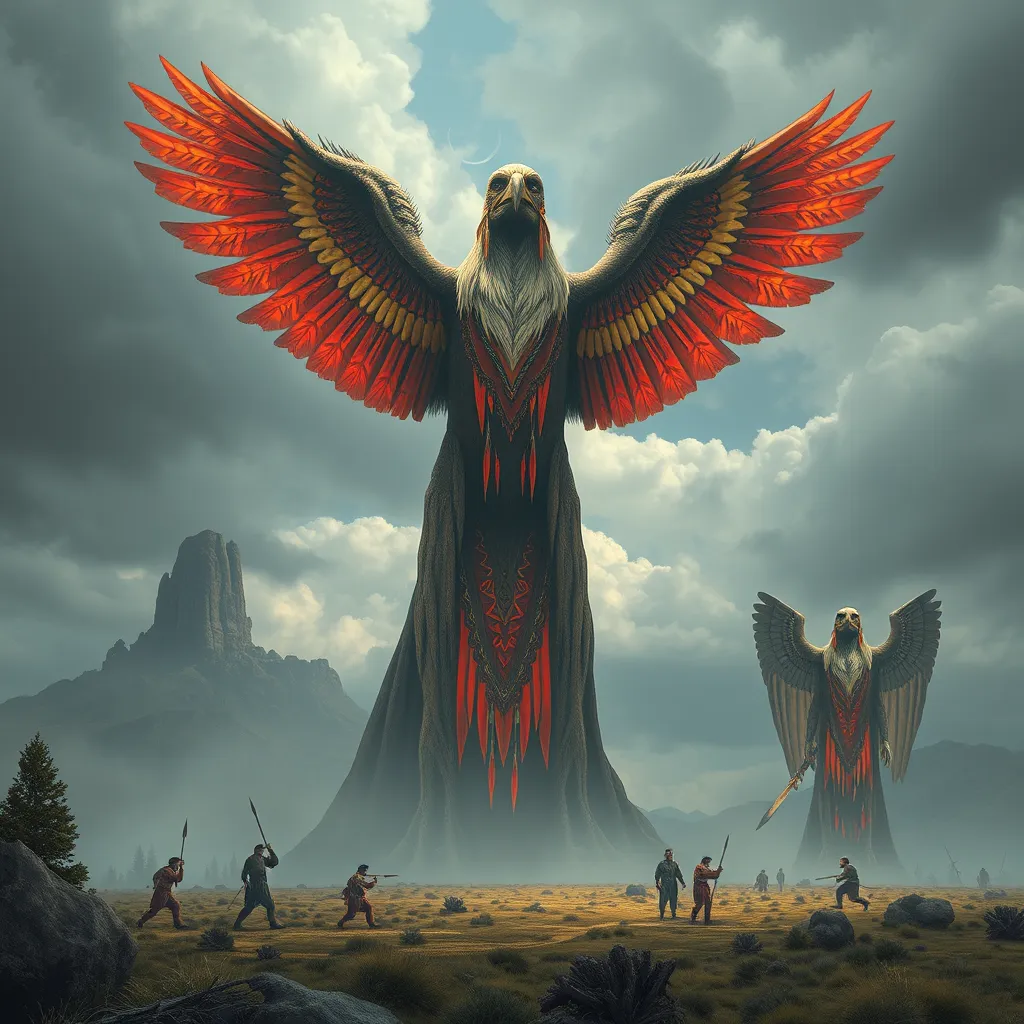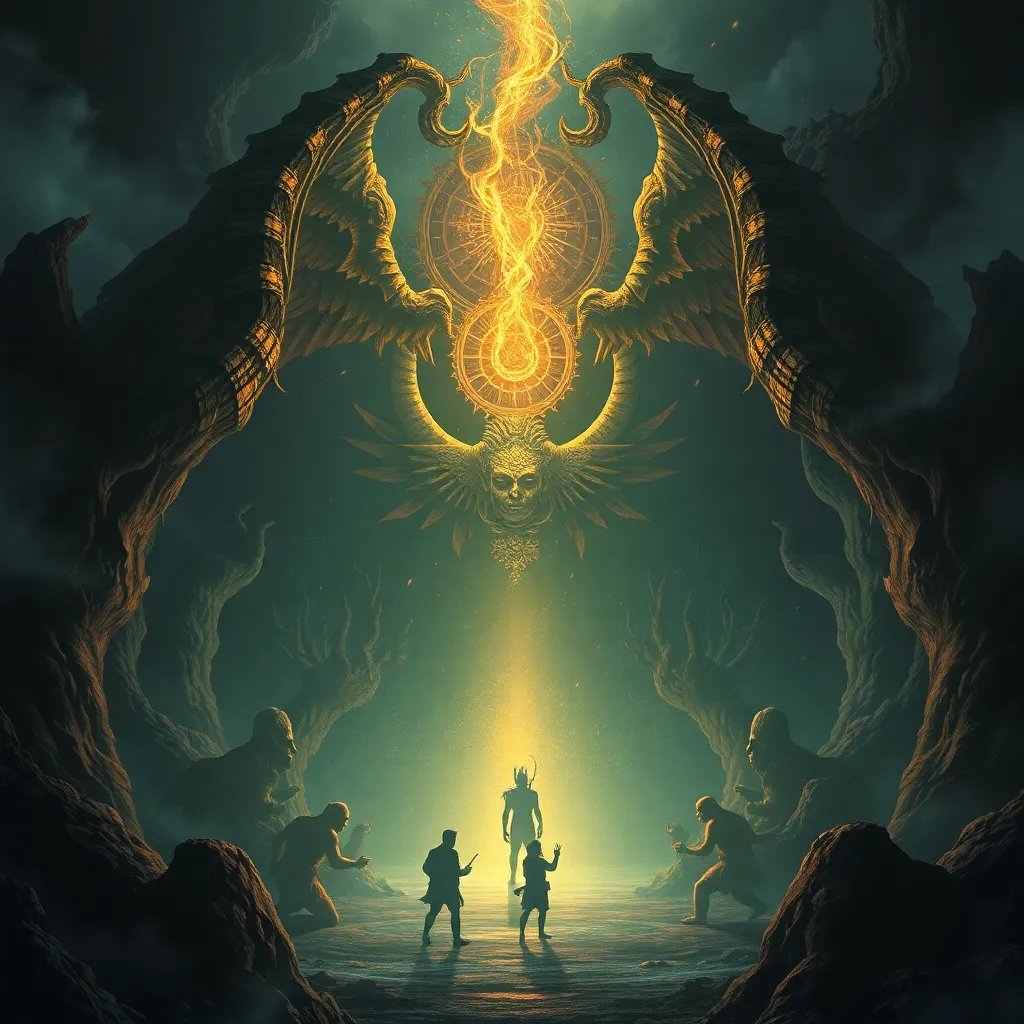The Giants of Native American Mythology: From Thunderbird to Giant Beings of the West
I. Introduction
Native American mythology is a rich tapestry of stories, beliefs, and symbols that reveal the deep connection between indigenous peoples and their environment. Among the myriad of figures that populate these narratives, giants hold a particularly prominent place. These colossal beings are not merely larger-than-life characters; they embody cultural values, natural phenomena, and the mysteries of creation. This article explores the significance of giants in Native American myths, with a focus on the Thunderbird and the giant beings of the West, delving into their roles in creation stories, their protective functions, and their relevance in contemporary Native American culture.
II. The Thunderbird: A Powerful Symbol
The Thunderbird is one of the most recognized figures in Native American mythology, often depicted as a massive bird capable of producing thunder and lightning. Its characteristics vary across different tribes, but several key attributes remain consistent:
- Size and Power: The Thunderbird is often described as being enormous, with wings that create thunderous sounds when flapped.
- Connection to Weather: It is typically associated with storms, rain, and fertility, playing a crucial role in agricultural societies.
- Spiritual Significance: The Thunderbird is seen as a powerful spiritual entity, often symbolizing strength, protection, and the divine.
Culturally, the Thunderbird holds great significance among various tribes, including the Ojibwe, Lakota, and Navajo. In these cultures, the Thunderbird is often revered as a protector and a bringer of life-giving rain. Numerous stories and legends surround this majestic creature, illustrating its role in the balance of nature and its capacity to influence human affairs.
III. The Giant Beings of the West
In the western regions of North America, many Native American tribes feature giant figures in their mythology. These giants often embody the land itself, representing the mountains, rivers, and other natural elements. Notable giants include:
- Kachina: Among the Hopi and Zuni tribes, Kachinas are spirit beings that are often depicted as large, anthropomorphic figures. They represent various aspects of nature and are integral to the tribes’ religious rituals.
- Other Giants: Various tribes speak of giants who walked the earth, shaped the landscape, or interacted with humans, often serving as symbols of strength and guardianship.
These giants play a vital role in the creation myths of these tribes, often described as shaping the earth, creating mountains, and forming rivers. Their actions and narratives reflect the tribes’ understanding of the natural world and their place within it.
IV. The Role of Giants in Creation Stories
Giants are often depicted in creation narratives as foundational figures who help shape the world. Their portrayal varies significantly across different tribes, but common themes emerge:
- Creation of Landforms: Many myths describe giants as the creators of mountains, valleys, and other geographic features.
- Interaction with Natural Elements: Giants are frequently associated with natural phenomena, such as storms or earthquakes, reflecting their power and connection to the earth.
- Tribal Variations: Different tribes have unique stories about giants, which often highlight their cultural values and beliefs regarding nature.
This diversity in narratives underscores the importance of giants in explaining the origins of the world and the relationships between humans and nature.
V. Giants as Guardians and Protectors
In Native American beliefs, giants often assume protective roles, acting as guardians of the land and its people. These protective figures serve several functions:
- Guardians of Nature: Many giants are believed to watch over specific regions, ensuring the balance of nature and the well-being of the inhabitants.
- Defenders of the People: Stories often depict giants intervening in times of crisis, defending their communities from threats.
- Moral Lessons: The narratives surrounding giants frequently convey moral lessons, emphasizing the importance of respect for nature and community.
Through these stories, giants teach valuable lessons about responsibility, stewardship, and the interconnectedness of all living beings.
VI. Misinterpretations and Modern Depictions
In popular culture, giants from Native American mythology have often been misrepresented, leading to misunderstandings about their significance. Common issues include:
- Oversimplification: The complex roles and characteristics of giants are often reduced to mere entertainment figures in movies or books.
- Misappropriation: Some representations exploit Native American imagery without respect for its cultural context, undermining the rich traditions from which these stories arise.
- Efforts for Reclamation: Many Native American communities are working to reclaim accurate representations of giants, emphasizing their cultural importance and spiritual significance.
These efforts are crucial in ensuring that the rich narratives surrounding giants are honored and understood appropriately.
VII. Contemporary Relevance of Giant Legends
The mythology of giants continues to hold significance within Native American communities today. Their stories are not merely relics of the past but serve various contemporary purposes:
- Cultural Preservation: Giant legends are integral to cultural education, helping younger generations understand their heritage.
- Reflection of Contemporary Issues: Many giants’ stories address current challenges faced by Native communities, such as environmental concerns and cultural survival.
- Community Identity: The legends foster a sense of identity and belonging, reinforcing connections to land and culture.
By continuing to share and celebrate these stories, Native American communities ensure that the lessons and values embodied by giants remain relevant and impactful.
VIII. Conclusion
Giants in Native American mythology play a vital role in shaping cultural narratives, reflecting the deep connections between the people and their environment. The stories of the Thunderbird and giant beings of the West illustrate the richness of these traditions and their ongoing relevance today. As we explore and respect these indigenous narratives, we honor the enduring legacy of giants, their teachings, and their profound significance in the tapestry of Native American culture.



